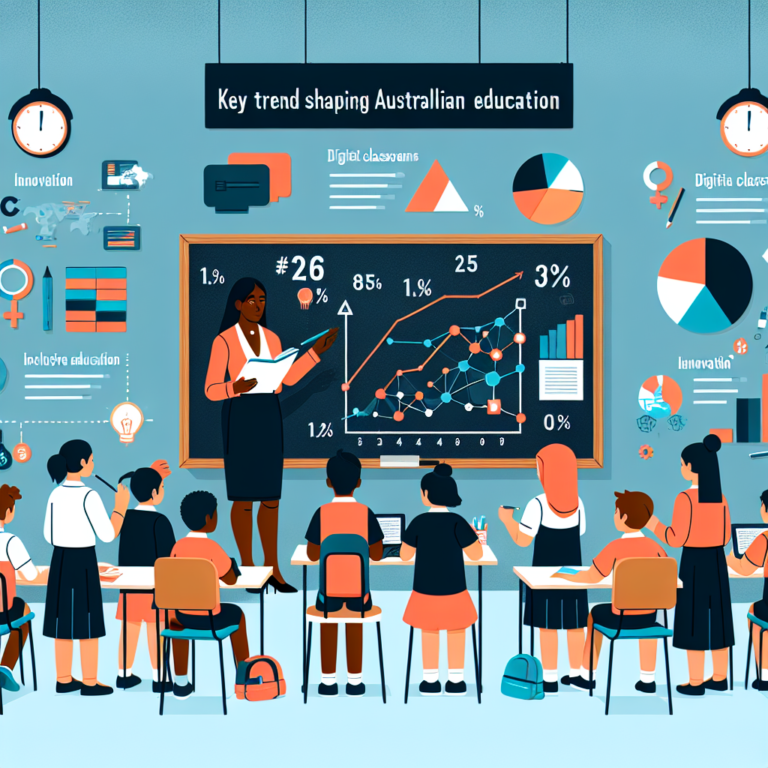Addressing Inequality in Australian Education
In the realm of Australian education, a pressing issue persists. This issue is education inequality.
Despite Australia’s reputation for high-quality education, not all students share in this excellence. The reality is that disparities exist, and they are significant.
These disparities are influenced by various factors. Socioeconomic status, geographic location, and cultural background all play a part.
The impact of these inequalities is far-reaching. They affect not only individual students but also the broader Australian society.
In this article, we delve into the complexities of education inequality in Australia. We will explore its causes, its impacts, and potential solutions.
Our aim is to shed light on this critical issue and stimulate informed discussions. Together, we can work towards a more equitable education system in Australia.
The Landscape of Australian Education
Australia’s education system is renowned globally for its high standards. It offers a comprehensive and diverse range of educational opportunities.
However, beneath this surface of excellence, disparities exist. These disparities create a landscape of inequality, affecting students’ access to quality education and their educational outcomes.
Defining Education Inequality in Australia
Education inequality refers to the disparate access to quality education and unequal educational outcomes experienced by different groups. This disparity is often influenced by factors such as socioeconomic status, geographic location, and cultural background.
In the context of Australia, education inequality manifests in various ways. It can be seen in the achievement gap between Indigenous and non-Indigenous students, the disparities between urban and rural schools, and the differing outcomes based on family income.
Statistical Overview: Disparities in Educational Outcomes
A closer look at the data reveals the extent of education inequality in Australia. For instance, socioeconomic status significantly influences educational outcomes. Students from low-income families often lag behind their wealthier peers in academic achievement.
Geographic location also plays a crucial role. Students in rural areas, where resources are often limited, tend to have lower educational attainment compared to those in urban areas. Similarly, Indigenous students consistently underperform compared to their non-Indigenous counterparts.
Here are some key statistics that highlight these disparities:
- The achievement gap between the top and bottom socioeconomic quartiles is equivalent to almost three years of schooling.
- Indigenous students are, on average, 2.5 years behind in reading and numeracy compared to non-Indigenous students.
- Students in remote areas are up to two years behind their urban counterparts in terms of educational attainment.
“
Geographic Disparities: Urban vs. Rural Education
The geographic divide in Australia’s education system is a significant contributor to inequality. Rural and remote areas often lack the resources and infrastructure found in urban centers. This disparity can limit the quality of education available to students in these regions.
Moreover, rural schools often struggle to attract and retain high-quality teachers. This issue, coupled with limited access to advanced coursework and extracurricular activities, can hinder the educational opportunities and outcomes for students in these areas. Addressing these geographic disparities is a critical step towards achieving a more equitable education system in Australia.
Socioeconomic Status and Educational Attainment
Socioeconomic status (SES) plays a pivotal role in shaping educational outcomes in Australia. Students from low-SES backgrounds often face numerous challenges that can impede their academic progress. These include limited access to educational resources, less parental involvement, and higher rates of school dropout.
Conversely, students from high-SES backgrounds typically have more educational opportunities. They often attend well-resourced schools, have access to private tutoring, and are more likely to pursue higher education. Addressing these socioeconomic disparities is crucial for promoting equity in the Australian education system.
Indigenous Students and the Achievement Gap
Indigenous students in Australia face a significant achievement gap compared to their non-Indigenous peers. This disparity is evident in standardized test scores, high school completion rates, and university enrollment figures. Factors contributing to this gap include systemic bias, cultural disconnection, and lack of access to quality education.
Efforts to close this gap must prioritize culturally responsive teaching practices and curriculum design. Additionally, increased funding for Indigenous education and targeted support programs can help improve educational outcomes for Indigenous students. Addressing this achievement gap is a critical step towards achieving education equality in Australia.
The Role of Government Funding and Policy
Government funding and policy play a crucial role in shaping the landscape of education in Australia. The allocation of resources can either exacerbate or alleviate educational disparities. For instance, policies that favor wealthier schools can widen the gap between high and low socioeconomic groups.
Conversely, policies aimed at equitable distribution of funds can help bridge these gaps. This includes increased funding for schools in disadvantaged areas and policies that promote equal access to quality education. Therefore, government accountability and transparency in education policy are vital in addressing education inequality in Australia.
The Impact of School Resources and Teacher Distribution
The distribution of school resources and teachers significantly influences education inequality in Australia. Schools in affluent areas often have access to better resources, including modern facilities, advanced technology, and a wide range of extracurricular activities. This disparity in resources can lead to unequal educational outcomes.
Similarly, teacher distribution plays a crucial role. Schools in disadvantaged areas often struggle to attract and retain high-quality teachers. This can result in a lower quality of education for students in these areas. Therefore, addressing these disparities in resource and teacher distribution is key to reducing education inequality.
Bridging the Gap: Technology and Innovation in Education
Technology and innovation hold immense potential to bridge the education inequality gap in Australia. Digital resources can provide access to quality education for students in remote or disadvantaged areas. They can also cater to diverse learning needs, making education more inclusive.
However, the effective use of technology in education requires adequate infrastructure and digital literacy. It’s crucial to ensure that all students, regardless of their socioeconomic status, have access to the necessary tools and skills. This way, technology can truly serve as a leveller in the Australian education system.
Solutions and Strategies for a More Equitable Education System
Addressing education inequality in Australia requires a multi-faceted approach. It involves policy reform, increased funding, improved teacher distribution, and the implementation of inclusive practices. It’s also essential to focus on early childhood education, as it sets the foundation for future learning.
Moreover, community involvement, non-profit initiatives, and public-private partnerships can play a significant role in education reform. These entities can provide additional resources, support programs, and innovative solutions. Ultimately, achieving a more equitable education system in Australia requires collective effort and commitment from all stakeholders.









